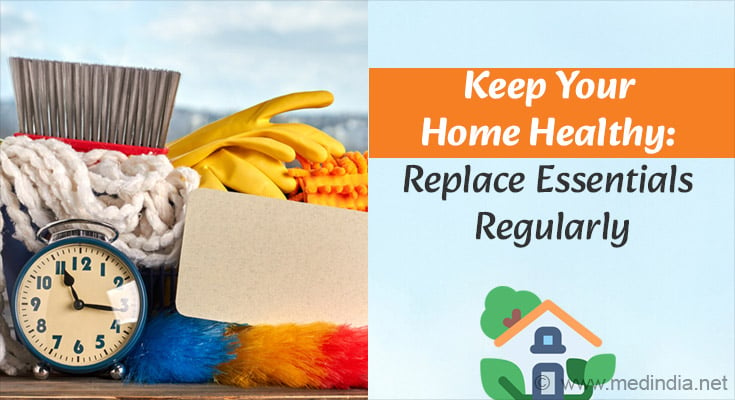- Replace plastic containers every 2-3 years to prevent bacterial growth
- Swap out kitchen sponges every 1-2 weeks to avoid germ buildup
- Renew mattresses every 7-10 years for better sleep and hygiene
Are you concerned about how long your household items like mattresses, pillows, and kitchen tools last? It’s easy to overlook, but specialists warn that keeping certain items past their prime can lead to health issues like infections or breathing problems.
Changes in water treatment, hygiene practices, household floors, and child health in times of Covid-19: A longitudinal cross-sectional survey in Surkhet District, Nepal
).
Pillows can collect dust mites and sweat, impacting your health. #hygiene #health #medindia’
Key Household Items and When to Replace Them
Let’s take a look at some common items and when you should consider replacing them:
-
Plastic Storage Containers
Swap them out every 2-3 years.
Plastic containers can develop cracks and scratches over time, creating havens for bacteria. Opt for glass containers as a safer alternative. -
Kitchen Sponges
Replace them every 1-2 weeks.
Sponges are notorious for harboring bacteria, especially when they stay wet. Try microwaving damp sponges for a minute daily to kill germs, or switch to reusable silicone scrubbers. -
Cutting Boards
Change them every 1-2 years. Deep cuts and scratches on cutting boards can trap bacteria, making them hard to clean. Use separate boards for raw meat, poultry, and veggies to prevent cross-contamination. -
Non-Stick Pans
Update them every 3-5 years. As non-stick coatings wear down, they can release harmful chemicals. Invest in quality pans and avoid overheating to make them last longer. -
Loofahs
Replace them every 3-4 weeks.
Loofahs can quickly become breeding grounds for bacteria and mold. Try natural alternatives like washcloths or replace loofahs regularly. -
Pillows
Change them every 1-2 years.
Pillows gather dead skin cells, dust mites, and sweat, leading to allergies and respiratory issues. Use pillow protectors and wash pillowcases often to extend their life. -
Mattresses
Renew them every 7-10 years.
Mattresses collect dust mites and bacteria, impacting sleep quality and causing allergies. Rotate and flip them regularly, and use mattress protectors to keep them clean longer. -
Carpets
Replace them every 10 years.
Carpets trap dust, pet dander, and allergens, affecting respiratory health. Vacuum regularly and consider steam cleaning annually to keep them fresh.Advertisement
To summarize, keeping track of the lifespan of household essentials is essential for maintaining a healthy living environment. By replacing items like pillows, cutting boards, and mattresses regularly, you can minimize the risk of bacterial growth, allergen accumulation, and other health hazards.










